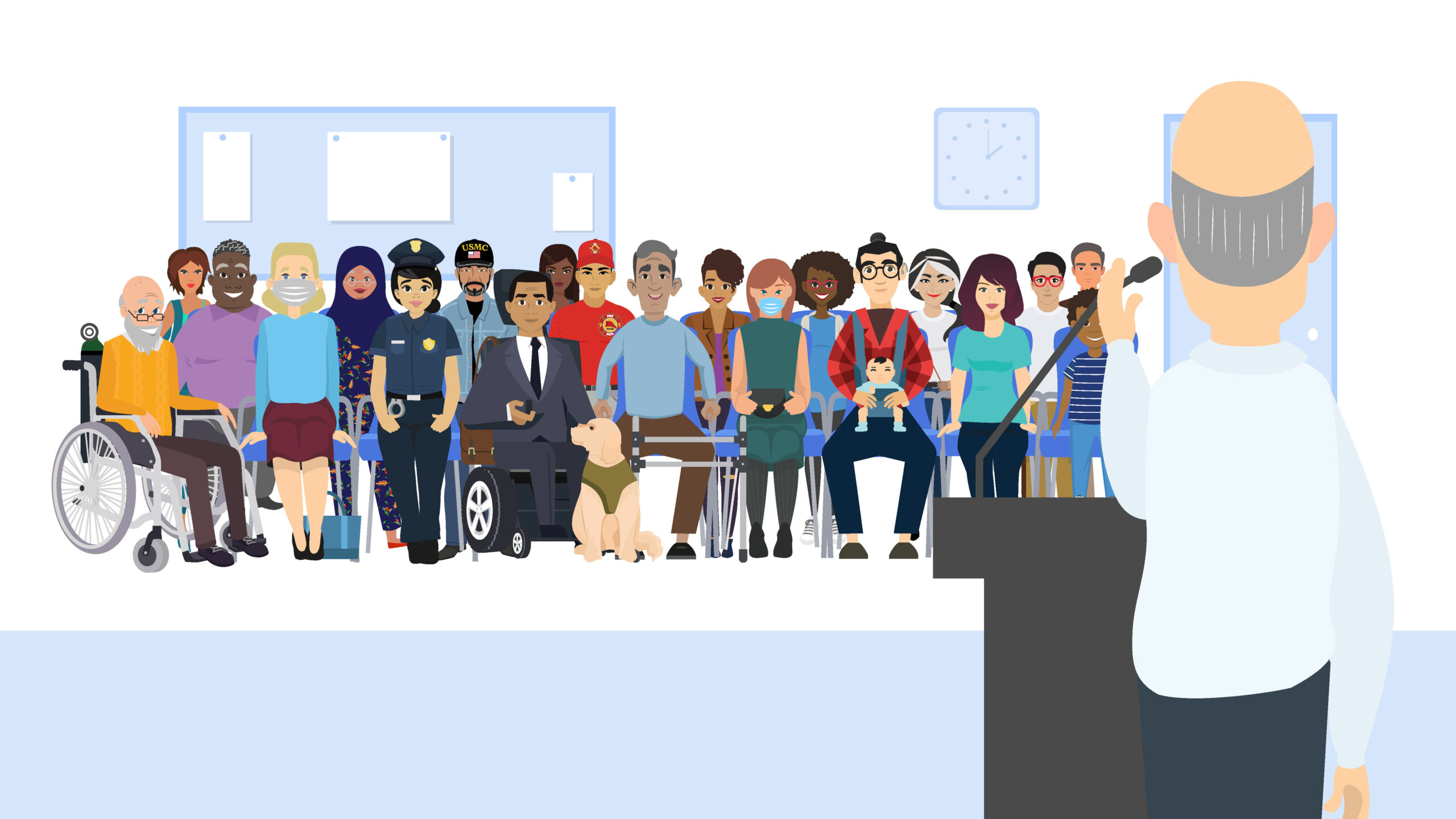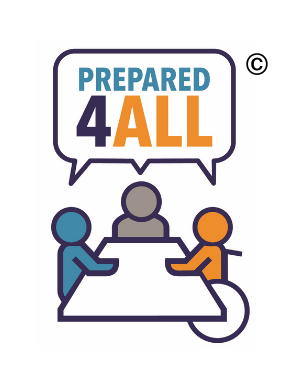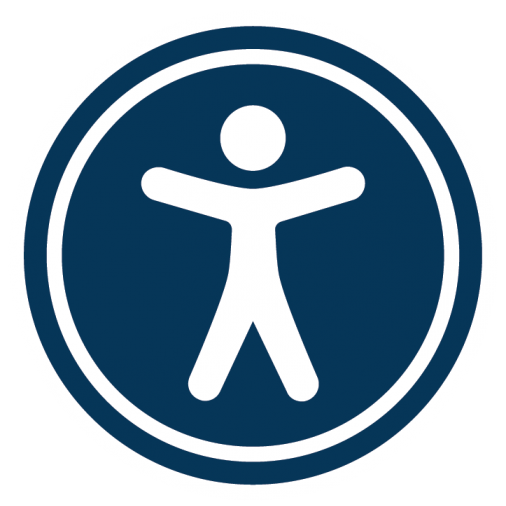Archives: Lessons
START HERE – Introduction to ECOOL
This training fulfills the mandatory 6-hour orientation requirement for early care and education professionals in Kentucky.
ECOOL consists of three modules, divided into multiple lessons. Each lesson contains multiple topics and quizzes. All lessons, topics and quizzes must be completed before moving forward. Use the course navigation on the right to see what you have completed (look for the green circles).
- Health, Safety, & Sanitation (2 hours)
- Includes mandatory First Aid and CPR training
- Recognizing and Reporting Child Abuse and Neglect (1 hour)
- Recommended Practices in Early Care and Education (3 hours)
Lesson 1: Welcome to Disasterville: The Prepared4ALL Process and COVID-19 Testing

⌛This lesson will take about one hour to complete, although every learner moves at their own pace.
Learning Objectives
After completing today’s visit (lesson), you will be able to:
• Define the “whole community” philosophy
• Define “Community Stakeholder Meetings”
• Define Prepared4ALL Action Teams
• Describe the Prepared4ALL process

This course may help increase your knowledge about whole community emergency planning (including COVID-19) and share basic information to connect with your local emergency managers, public health planners, and the community.
In the course, you will take on the “Terrye Trainee” role from Tornado Gap County, USA. Terrye is a professional from Tornado Gap’s local disability organization, Access & Equity, Inc. Tornado Gap’s county government, local disability organizations, and other community organizations want to collaborate to identify and close emergency planning gaps. These gaps include people with disabilities, people who have chronic health conditions, and mental health conditions. Terrye has heard about Disasterville’s inclusive emergency planning success and is visiting neighboring Disasterville to learn from their work.
After arriving in Disasterville, you will hear from Disasterville’s professionals and community members and assist them with whole community inclusive emergency planning. You’ll learn about the Prepared4ALL process for local emergency planning collaboration. Local emergency and public health preparedness planners, the Americans with Disabilities Act (ADA) Coordinator, and others from Disasterville will talk about what local planners may not know about people with disabilities. They’ll explain Prepared4ALL Action teams, how to hold Community Stakeholder Meetings using the Active Planning workbook, and how the U.S. local emergency planning system works.
As you meet Disasterville professionals and community members, you will be asked to make decisions and answer questions to check your learning about inclusive and accessible local emergency planning.
You must visit Disasterville eight times to earn a Prepared4ALL Certificate of Completion.
This course is intended to help local disability organizations strengthen engagement with local emergency and public health preparedness planners to get a seat at the local emergency planning table.
This training course’s characters, locales, businesses, and other entities are fictional. Any resemblance to real persons, whether living or dead, real locales, businesses, and other entities is coincidental. The content and materials for this course are for informational purposes only and are not to be considered legal or medical advice. For legal advice, please consult an attorney, and for medical advice, please consult a healthcare provider.

We are committed to providing this course to all people. To the right of this page, you will find an accessibility menu. Clicking the menu will provide options that may help you complete the course. If you have any ideas on making this course more accessible, please get in touch with us.
Click the first topic below to continue.
Supported Employment Session 1 Evaluation
Sample Lesson
This is content1
This is content 2
Online Training 101 – October 20, 2020
Zoom Recording
Discussion Forum
Please scroll down and submit comments below so we can use this space to continue our conversation on Online Training 101 and support each other in this work. Ask/answer questions, share successes and challenges, respond to each other, etc.
Review: Test your Materials
Represent: Use Visuals
Write: ABC’s of Plain Language
Why Plain Language?
#Healthy at Training – August 11, 2020
Zoom Recording
Discussion Forum
Please scroll down and submit comments below so we can use this space to continue our conversation on #Healthy at Training and support each other in this work. Ask/answer questions, share successes and challenges, respond to each other, etc.
Lesson 5: Listen Up! Strategies for Building Communication
Learning Objectives
Lesson Workbook
[ld_video]
References
Chazin, K. T., Barton, E. E., Ledford, J. R. (2018). Implementation and intervention practices to facilitate communication skills for a child with complex communication needs. Journal of Early Intervention, 40, 138-157. doi:https://doi.org/10.1177/1053815118771397
Cowan, R. J. & Allen, K. D. (2007). Using naturalistic procedures to enhance learning in
individuals with autism: A focus on generalized teaching within the school setting.
Psychology in the Schools, 44(7), 701-715. doi: 10.1002/pits.20259
Kaiser, A. P., & Wright, C. A. (2013). Enhanced milieu teaching: Incorporating AAC into
naturalistic teaching with young children and their partners. Perspectives on Augmentative and Alternative Communication, 22, 37-50.
Kashinath, S., Woods, J., & Goldstein, H. (2006). Enhancing generalized teaching strategy use in daily routines by parents and children with autism. Journal of Speech, Language and Hearing Research, 49(3), 466-485. doi:10.1044/1092-4388(2006/036)
O’Neill, T., Light, J., Pope, L. (2018). Effects of interventions that include aided augmentative and alternative communication input on the communication of individuals with complex communication needs: A meta-analysis. Journal of Speech, Language, and Hearing Research, Vol. 61, 1743-1765.
Sennott, C. S., Light, J.C., & McNaughton, D. (2016) AAC modeling intervention research review. Research and Practice for Persons with Severe Disabilities. 14(12)1-1-115.
Zabala, J., Bowser, G., & Korsten, J. (2004). SETT and ReSETT: Concepts for AT implementation. Closing The Gap, Vol. 23, No. 5. Retrieved from http://joyzabala.com/uploads/Zabala_CTG_SETT_and_ReSETT_.pdf
Lesson 3: Listen Up! Factors Impacting Communication
Learning Objectives
Lesson Workbook
[ld_video]
References
Binger, C., Ball, L., Dietz, A., Kent-Walsh, J., Lasker, J., Lund, S., & … Quach, W. (2012). Personnel roles in the AAC assessment process. Augmentative and Alternative Communication (Baltimore, Md.: 1985), 28(4), 278-288. doi:10.3109/07434618.2012.716079
Brady, N., & Bashinski, S. (2008). Increasing communication in children with concurrent vision and hearing loss. Research & Practice for Persons with Severe Disabilities, 33(1/2), 59-70.
Rainforth, B., & York-Barr, J. (1996). Handling and positioning. In F. Orelove & D. Sobsey (Eds.), Educating children with multiple disabilities: A transdisciplinary approach (3rd ed.) (pp. 79-118). Baltimore, MD US: Paul H Brookes Publishing.
Romski, M. A., & Sevcik, R. (1988). Augmentative and alternative communication systems: Considerations for individuals with severe intellectual disabilities.
Tedder, N. E., & Warden, K. K. (1993). Prelanguage communication of students who are deaf-blind and have other severe impairments. Journal of Visual Impairment & Blindness, 87(8), 302.
Thistle, J., Holmes, S., Horn, M. & Reum, A. (2018). Consistent Symbol Location Affects Motor Learning in Preschoolers Without Disabilities: Implications for Designing Augmentative and Alternative Communication Displays. American Journal of Speech-Language Pathology, 1-8.
Wilkinson, K. M., & Snell, J. (2011). Facilitating children’s ability to distinguish symbols for emotions: The effects of background color of cues and spatial arrangement of symbols on accuracy and speed of search.American Journal of Speech-Language Pathology, 20(4), 288-301. doi:10.1044/1058-0360(2011/10-0065)
Lesson 4: Listen Up! AAC
Learning Objectives
Lesson Workbook
[ld_video]
References
Beukelman, D. & Mirenda, P. (2013). Augmentative and alternative communication: Supporting children and adults with complex communication needs (4th ed.). Baltimore, MD: Brookes.
Calculator, S. N., & Black, T. (2009). Validation of an inventory of best practices in the provision of augmentative and alternative communication services to students with severe disabilities in general education classrooms. American Journal of Speech-Language Pathology, 18(4), 329–342.
Ganz, J.B., Morin, K.L., Foster, M.J., Vannest, K.J., Tosun, D.G., Gregori, E.V., & Gerow, S.L. (2017). High-technology augmentative and alternative communication for individuals with intellectual and developmental disabilities and complex communication needs: A meta-analysis. Augmentative and Alternative Communication, 33, 224–238. doi:10.1080/07434618.2017.1373855
Johnston, S., McDonnell, A., Nelson, C., & Magnavito, A. (2003). Teaching functional communication skills using augmentative and alterative communication in inclusive settings. Journal of Early Intervention, 25, 263–280.
Johnston, S.S., Reichle, J., Feeley, K., & Jones, E. (2012). AAC strategies for individuals with moderate and severe disabilities. Baltimore: Paul Brookes, Publishing Co.
Light, J., McNaughton, D., & Caron, J. (2019). New and emerging AAC technology supports for children with complex communication needs and their communication partners: State of the science and future research directions. Augmentative and Alternative Communication DOI: 10.1080/07434618.2018.1557251
TIES Communication Tip #3: Getting to Know Students Who Use AAC. Minneapolis, MN: University of Minnesota, The TIES Center. Retrieved from: https://publications.ici.umn.edu/ties/communicative-competence-tips/getting-to-know-students-who-use-aac
Lesson 2: Listen Up! Identifying Communication
In this lesson, we will explore identifying communication through two videos. Start by clicking on the first topic below.
Lesson 1: Listen Up! Introduction
Learning Objectives
Lesson Workbook
An interactive workbook will be posted with each lesson. Print or download the workbook now.
[ld_video]
? Check your Knowledge: What percent of students who need AAC have AAC?
Check yourself by clicking on one of the options below.
Less than 25%
Actually, the number is only about 50% of students who need AAC have AAC.
Just under 50%
That’s right. Just under 50% of students who need AAC have AAC.
Around 80%
Actually, the number is only about 50% of students who need AAC have AAC.
Almost 95%
Actually, the number is only about 50% of students who need AAC have AAC.
References
Brady, N. C., Bruce, S., Goldman, A., Erickson, K., Mineo, B., Ogletree, B. T., Paul, D., Romski, M., Sevcik, R., Siegel, E., Schoonover, J., Snell, M., Sylvester, L., & Wilkinson, K. (2016). Communication services and supports for individuals with severe disabilities: Guidance for assessment and intervention. American Journal on Intellectual and Developmental Disabilities, 121(2), 121–138. Retrieve Communication Bill of Rights from: https://www.asha.org/siteassets/uploadedfiles/NJC-Communication-Bill-Rights.pdf
Kearns, J., Towles-Reeves, E., Kleinert, H., Kleinert, J., & Thomas, M. (2011). Characteristics of and implications for students participating in alternate assessments based on alternate academic achievement standards. Journal of Special Education, 45(1), 3–14.
Snell, M. E., Brady, N., McLean, L., Ogletree, B. T., Siegel, E., Sylvester, L., . . . Sevcik, R. (2010). Twenty years of communication intervention research with individuals who have severe intellectual and developmental disabilities. American Journal on Intellectual and Developmental Disabilities, 115, 364-380. doi:10.1352/1944-7558-115-5.364
